Digital artistry in the service of immersive storytelling and believable worlds — this year’s Oscar-nominated VFX teams tell Screen all about the creative principles underpinning their work, and how they set about delivering their vision.

The US Academy Award for special visual effects is a category that has seen science-fiction films win for much of the past decade, either recognisably Earth-bound (Tenet, Ex Machina, Blade Runner 2049) or beyond the realm of our planet (First Man, Interstellar, Gravity and last year’s winner Dune).
The remaining VFX Oscar wins in the past decade have been for films offering different flavours: 1917, The Jungle Book and Life Of Pi.
This year’s VFX nominees are the teams from two comic-book adaptations (The Batman and Black Panther: Wakanda Forever); two very different films depicting warfare, one overt (All Quiet On The Western Front) and the other covert (Top Gun: Maverick); plus immersive sci-fi sequel Avatar: The Way Of Water.
Despite the wildly different worlds depicted in these films, Screen International’s interviews with one or more supervisor from each nominated team collectively suggest that today’s visual-effects artists are increasingly striving for their work to be “seamless” and “invisible”. What’s more, they are working ever more closely with directors, cinematographers, specials-effects departments and stunt teams to capture as much of the action in-camera as possible.
So while visual effects have been vital to Hollywood’s ability to keep expanding the frontiers of image and sensation, these nominees say their focus remains first and foremost on storytelling, and creating worlds that audiences believe are real.
All Quiet On The Western Front
Frank Petzold, Viktor Muller, Markus Frank and Kamil Jaffar
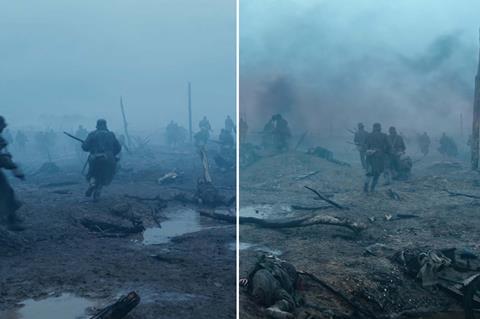
Viewers have been accustomed to visual effects drawing attention to themselves, often becoming the talking point of a film. But All Quiet On The Western Front’s production VFX supervisor Frank Petzold had a different ambition.
“The plan was to make the visual effects invisible,” he says. “As a native German, I have so much respect for the [Erich Maria Remarque] book, it’s so iconic, that we had to do it right. Which means it couldn’t be a spectacle. The story was front and centre.”
The anti-war epic reunited Petzold with director Edward Berger, following 2018 television series The Terror. “Edward is very inclusive, so it’s easy to work with him on set. You feel more like you’re part of the filmmaking process than just being a VFX technician. So, when he emailed and said, ‘Do you want to get the band back together?’, I was like, ‘Sure, any time.’”
To realise their desire for photoreal authenticity, Petzold prioritised “real stuff, in camera” over CGI composition, shooting material with a small VFX team during the main production, which took place on a former airfield near Prague that had been transformed into a First World War battlefield.
“It was a sort of old-school approach. I had an outdoor green-screen stage built out of sea containers and, whenever we had a second, I invited stuntmen to run on treadmills, we’d make explosions, capture the muzzle flashes from original World War One machine guns. I had up to six cameras, using multiple angles that could then be used in different shots.”

He laughs. “I had a huge database of just running guys. If you have a battle scene, the tiny soldiers way in the background are usually animations. Every person that you see in this film is real. There’s life in everything.
“At the end, you always have to go through the computer, but the question was, ‘Do I try to reconstruct reality, or can I take reality as an element and then build that into the compositing?’ It takes more time on set and is definitely more labour-intensive, but it’s worth it.”
Petzold’s team also 3D-scanned the entire battlefield (using special scanners on a crane), as well as period airplanes, tanks (the production had just one working tank), train cars and a steam engine, providing authentic material for any contingency.
Pure CG animation includes tanks, planes, fog and full CG matte paintings for bird’s-eye views of the battlefield. Petzold says UPP in Prague did “the heavy lifting”, while he turned to Cine Chromatix in Berlin for its expertise in environmental effects; the latter came to the rescue, for example, to “winter up” a scene after a beautiful morning’s snow had melted in the noon sun.
He is particularly proud of the terrifying sequence when French tanks drive mercilessly over the German trenches, squashing one soldier to pulp. “Every moving part was shot separately — with the stuntmen, with actors, with dummies and then with tanks — and in post you put them together. From the point of view of a VFX artist, it turned out really well; of course, the content of the image is horrible.”
Petzold’s Oscar submission for the visual-effects team includes himself, VFX supervisors Viktor Muller (UPP) and Markus Frank (Cine Chromatix), and special-effects supervisor Kamil Jaffar. Of the latter, he says: “I couldn’t do my VFX if I didn’t have somebody who knows everything about the perfect explosion.” For Petzold, who also sings the praises of director of photography James Friend, the pleasure of All Quiet was its “symbiotic” collaboration across departments. “Visual effects is so technology-driven — it always has to be the greatest, the latest, the fastest. We just wanted to perfectly depict what World War One felt like.”
Avatar: The Way Of Water
Joe Letteri, Richard Baneham, Eric Saindon and Daniel Barrett
![]()
When Richard Baneham and his team won an Oscar in 2010 for the visual effects on Avatar, it felt like the pinnacle of an already colossal achievement. James Cameron’s sci-fi epic grossed more than $2.7bn worldwide on its initial release, and was credited with setting a new bar in visual effects, particularly in the developing realm of performance capture. But “there was a lot of pressure too”, says Baneham.
In truth, that achievement was no pinnacle, but a milestone on a long, ascending journey towards Avatar: The Way Of Water. “Jim [Cameron] says it very well,” says Baneham. “It’s like asking lightning to strike twice in the same place.”
As visual-effects supervisor at Cameron’s Lightstorm Entertainment (he is also executive producer and virtual second-unit director on The Way Of Water), the Dublin-born former animator has, at the very least, delivered an impressive encore — one that has earned him another Academy Award nomination (sharing with Joe Letteri, Eric Saindon and Daniel Barrett of Weta FX). But the essence of what he does remains unchanged, he insists, since the days he worked on the groundbreaking Gollum for The Lord Of The Rings.
“You still want to get a clear performance to come through. You want to get the messaging of the movie to ring true. Ultimately, you just want to scratch at the cortex of reality.”
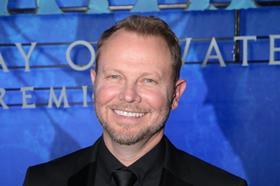
Of course, the technology has improved greatly. “This new facial-capture system we’re using is as close to a direct interpretation of the actor as you can get,” Baneham explains. “Yes, we have to augment the shape of the face a little to accommodate the character [typically, in the case of Avatar, a nine-foot-tall feline alien], but the actor’s performance is there to be seen.” However, The Way Of Water presented a whole new challenge — the clue is in the title.
With the action diving into the oceans of distant planet Pandora, the actors playing those aliens had to be captured while swimming in vast water tanks at California’s Manhattan Beach Studios. “Performance capture underwater is one problem, but it was one we solved relatively quickly,” says Baneham. It was a matter, he says, of keeping the submerged optical sensors dry and covering the water’s surface with tiny polymer beads to prevent light refraction.
“The second challenge is when an actor is sitting with half their body above the water. We had to take two discrete volumes — one dry, one wet — then temporally and geographically align that data set, and push it out to a tertiary server that makes it one complete body and pushes it back in real time… That took a little longer to solve,” he laughs. “But Jim’s always up for a challenge, and there’s no better expert on water and underwater than Jim.”
Baneham has worked closely with Cameron for many years, and says that while the once notoriously fiery filmmaker has mellowed (“he has become vegan, he does yoga and meditation”), he has lost none of his passion. “I have a saying — don’t confuse passion for anger. I am going to get worked up, and Jim’s going to get worked up, about what’s in front of us. But then we’ll walk away and have a beer. It’s not an issue. I love working with people who know what they want and are passionate. We’ll all be gone in 50, 100 years. This will live on. So let’s make it as good as we can.”
Baneham’s time on Pandora is far from over. They are “capture complete” on Avatar 3, which shot simultaneously with The Way Of Water, and have also completed “the first act of Avatar 4”. The technical leap to the sequels will not be as great as it was between Avatar and The Way Of Water, he says. “We’ll keep evolving the system and the techniques to make everything more and more credible. But ultimately, we now just have to invest in telling the story. It’s about exploring Pandora. The movies will take you to different cultures and biomes. The world expands.”
And the lightning, most likely, will keep striking.
The Batman
Dan Lemmon, Russell Earl, Anders Langlands and Dominic Tuohy
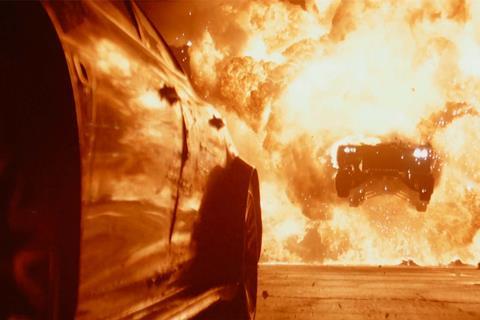
When visual-effects supervisor Dan Lemmon last worked with director Matt Reeves, on 2017’s War For The Planet Of The Apes, it is fair to say the results of his efforts were obvious. “If there was ever any danger of a shot feeling like it didn’t have any visual effects in it,” Lemmon jokes, “we’d just put in a talking monkey.” But their latest collaboration is a different beast. “We went into The Batman knowing we would try to be as invisible as possible,” Lemmon says.
Reeves cited influences such as The French Connection, Klute and Chinatown, giving this fresh take on Batman a feel of “gritty reality”. It was something Lemmon — who relocated from the US to New Zealand after joining rising VFX powerhouse Weta Digital (now Weta FX) while working on The Lord Of The Rings — achieved alongside UK special-effects supervisor Dominic Tuohy (1917).
During their earliest conversations, Lemmon and Tuohy resolved to achieve as much as possible practically, starting with that most iconic of super-vehicles, the Batmobile — imagined by Reeves as a kind of weaponised muscle car. “Dom’s team built high-performance vehicles that were not just showpieces,” says Lemmon.
“We kept it classic. Embraced the noise,” explains Tuohy, who oversaw the construction of four variants of the custom-built vehicle, three of which contained powerful General Motors LF3 engines, with a fourth that was electric (for filming scenes with Robert Pattinson’s Batman behind the steering wheel, while stunt driver Mark Higgins operated the car from the roof). “People don’t realise how big the Batmobile is,” says Tuohy. “It’s the size of a Hummer. The attention to detail was superb, and I wish people could get the opportunity to see them up close.”
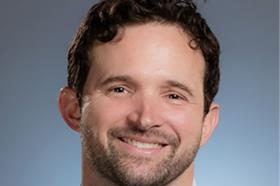
The degree of digital augmentation was minimal, says Lemmon — mostly a matter of adding rain and replacing the road to give an increased perception of speed. “The signature shot of the Batmobile flying through the wall of fire was 100% practical,” he says. “It was quite spectacular.”
The lion’s share of Lemmon’s work involved the extensive use of an LED volume on Warner Bros’ Leavesden set to create the striking backdrop of Reeves’ Gotham (primarily a blend of photographed locations in Chicago, New York, Glasgow, Liverpool and London) — the same method Disney+ series The Mandalorian, which shares cinematographer Greig Fraser with The Batman, used to conjure its landscapes.
However, the requirement to make Gotham look rain-lashed presented Tuohy with a unique problem. “We had this horseshoe of LEDs and it was amazing. Then we realised we had to do rain on it,” he says. These screens, he was told, would not survive a soaking. “We eventually made this system of shower screens where water was falling within millimetres of the LED screens. Everything had to be so precise.”
LED screens are “incredible tools”, says Lemmon, because they bathe the actors in the light of the photographed image. “You would never get as realistic a result if you shot against a blue screen or a green screen,” he adds. However, there is a sizeable caveat: “You’re making a commitment. What you put up on that screen is what you’re going to have in the movie. And that means a lot of effort in prep getting your assets up to a final state — which is the kind of thing you would normally do at the end of post.”
Lemmon’s next project is Minecraft, likewise with Warner Bros (“a fun little change of pace”), while Tuohy is returning to the comic-book genre with Deadpool 3. But both say they would jump at the chance of resuming their close collaboration in Reeves’ Gotham. “On many projects we work closely with the special-effects team,” says Lemmon. “But I feel on this one there really was a lot more conversation and planning.”
Tuohy describes his and Lemmon’s job as storytelling. “When you get both departments working together, you tell a story. And if you get it right, people believe that story. That’s what The Batman is all about — you want people to believe it’s real.”
Black Panther: Wakanda Forever
Geoffrey Baumann, Craig Hammack, R Christopher White and Daniel Sudick

Backing up the success of Marvel Studios’ first Black Panther film was always going to be tough for the makers of the sequel, especially after the untimely death in 2020 of title star Chadwick Boseman. And with effects work required on around 2,350 shots — 90% of the film — and a tighter-than-usual post-production schedule, the effects team on Black Panther: Wakanda Forever felt the pressure as much as anyone.
“The first film had such a global impact it was a daunting task to make something that met people’s expectations,” says Geoffrey Baumann, visual-effects supervisor on the sequel and the original.
Water proved the biggest challenge for Baumann and his fellow Oscar nominees from the project — ILM senior visual-effects supervisor Craig Hammack, Weta FX visual-effects supervisor R Christopher White and production special-effects supervisor Daniel Sudick. (Creating a digital double of Boseman for the sequel had been ruled out by Marvel soon after the actor’s death.)
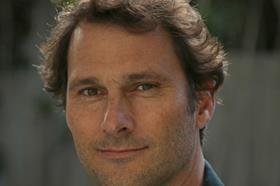
In the film, Wakanda is threatened by Namor, king of a civilisation whose people live in an underwater city and fight their battles on the ocean. To depict the undersea world, director Ryan Coogler “wanted to shoot practically as much as possible and not go full CG”, explains Baumann. “The mandate was to shoot as much of every scene as possible in a tank under water.”
Such wet-for-wet shooting made it difficult to capture actors’ performances, however, so the effects team developed a way of combining the wet-for-wet footage with dry-for-wet footage of the actors performing the same scenes against a blue screen on stage. In the dry-for-wet shoot, Baumann explains, “Ryan had an opportunity to direct more and the talent had more of an opportunity to perform, as opposed to focusing on holding their breath.” The wet-for-wet and dry-for-wet footage could then be intercut to produce a finished sequence.
The film’s underwater scenes also required careful attention to the way water reduces colour visibility at a distance. For those scenes, Baumann reports, the effects team did research and testing in water tanks, and made use of CG renderers developed recently by Weta FX, one of the production’s 17 vendors. “That allowed us to art direct, to adjust the visibility and turbidity and then to cheat the colour absorption,” he says.
The involvement of water added a layer of complexity to the sequel that had not been there in the original film and became, says Baumann, “an educational process for every veteran involved in the film. There had to be a lot of trust in the visual-effects department from all the other department heads, from the director of photography to costumes to production design.”
To foster that trust, Baumann encouraged direct contact between, for example, production designer (on the sequel and the original) Hannah Beachler and Weta FX, “so that Hannah knew we were following her direction and for Weta to feel part of the process and not just someone on the other end of a Zoom who’s just executing and doesn’t have a say in the creative process”.
Such close collaboration, suggests the Wakanda Forever VFX supervisor, will become more vital if filmmakers follow Coogler and move towards practical effects solutions rather than rely on digital technology.
After the rapid evolution of digital-effects technology over the past 20 years, the discipline of shooting photographically is making a comeback, Baumann says. “Visual effects needs to be one of the supporting members in that and not just the problem solver, as it sometimes is today.”
Top Gun: Maverick
Ryan Tudhope, Seth Hill, Bryan Litson and Scott R Fisher
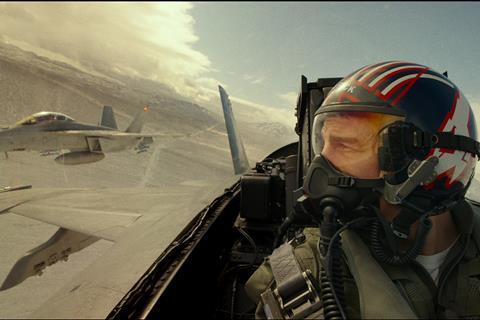
Given star and producer Tom Cruise’s well-known preference for real action, it is no surprise the effects approach on Top Gun: Maverick leant towards the practical. According to visual-effects supervisor Ryan Tudhope, early discussions with Cruise and director Joseph Kosinski on how to achieve the film’s aerial sequences, plus co-operation and support from the US Navy, all helped shape “a team-wide effort to get as much in-camera as possible”.
Turning the in-camera material into the finished film still required 2,400 VFX shots, but the approach led to “fundamentally realistic shot design”, says Tudhope, who is nominated for the Oscar together with Method Studios visual-effects supervisor Seth Hill, MPC visual-effects supervisor Bryan Litson and two-time Oscar-winning special-effects co-ordinator Scott R Fisher. That realistic foundation created what Tudhope describes as “a DNA that stuck with the shots all the way through post-production”.
The aerial sequences for the blockbuster sequel about elite fighter pilots were typically based on footage of F-18 jets — provided by the US Navy and flown by its pilots — with the film’s actors delivering lines from the planes’ back seats.
The project’s VFX team would then enhance the footage in relatively simple ways — by adding armaments to the planes’ wings, say — or in more complex ways, by, for example, inserting additional planes required by the plot into the background of a shot when only one or two real F-18s were available for filming.
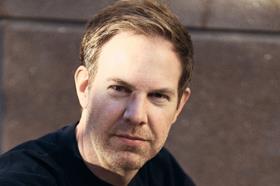
The team was also able to insert all-CG shots of planes into a sequence, using what Tudhope says were “hundreds and hundreds of hours of aerial footage we captured over the course of the production” as a reference to ensure accuracy. To fine-tune the digital images, the team solicited advice from real Navy fliers who, reports Tudhope, “were essentially giving animation notes based on being around jets their whole lives”.
In a process they christened ‘re-skinning’, Top Gun: Maverick’s VFX artists were even able to turn footage of real F-18 jets into finished sequences showing different types of planes, such as the now-retired F-14 Tomcat and, for the film’s fictional enemy fighters, the Russian-made Su-57. “We would essentially remove that [real] jet from the frame and replace it with the jet we needed for the story,” Tudhope explains.
Re-skinning also made it possible to transform footage of training aircraft flying in non-military air space off the coast of California into a finished sequence depicting F-18s in that same photogenic location.
Maverick’s climactic combat sequence called on the VFX department not just to add planes, missile trails and explosions to raw footage, but also to complete the location — a steep-sided bowl sheltering the enemy’s uranium-enrichment plant — demanded by the story. The production found one half of a suitable bowl formation in the Cascade mountain range of Washington state, but the other half was created digitally by the effects team.
When Top Gun: Maverick opened last summer to critical plaudits and huge box-office success (a worldwide gross of nearly $1.5bn), much of the acclaim focused on the apparent realism of its spectacular flight scenes, rather than the enhancements provided by the film’s VFX team. And that’s fine by Tudhope. “We set out to create invisible, seamless work that audiences wouldn’t even think about,” says the project’s VFX supervisor, whose credits include two Pirates Of The Caribbean films, two entries in the Star Trek franchise and Amazon’s The Lord Of The Rings: The Rings Of Power streaming series.
“The biggest compliment is when people don’t talk about it,” Tudhope says, adding: “We always want to be careful about showing how we do things, because we want the films to live on their own.”






![The Brightest SunScreen[Courtesy HKIFF]](https://d1nslcd7m2225b.cloudfront.net/Pictures/274x183/3/5/0/1448350_thebrightestsunscreencourtesyhkiff_312678.jpg)


















No comments yet